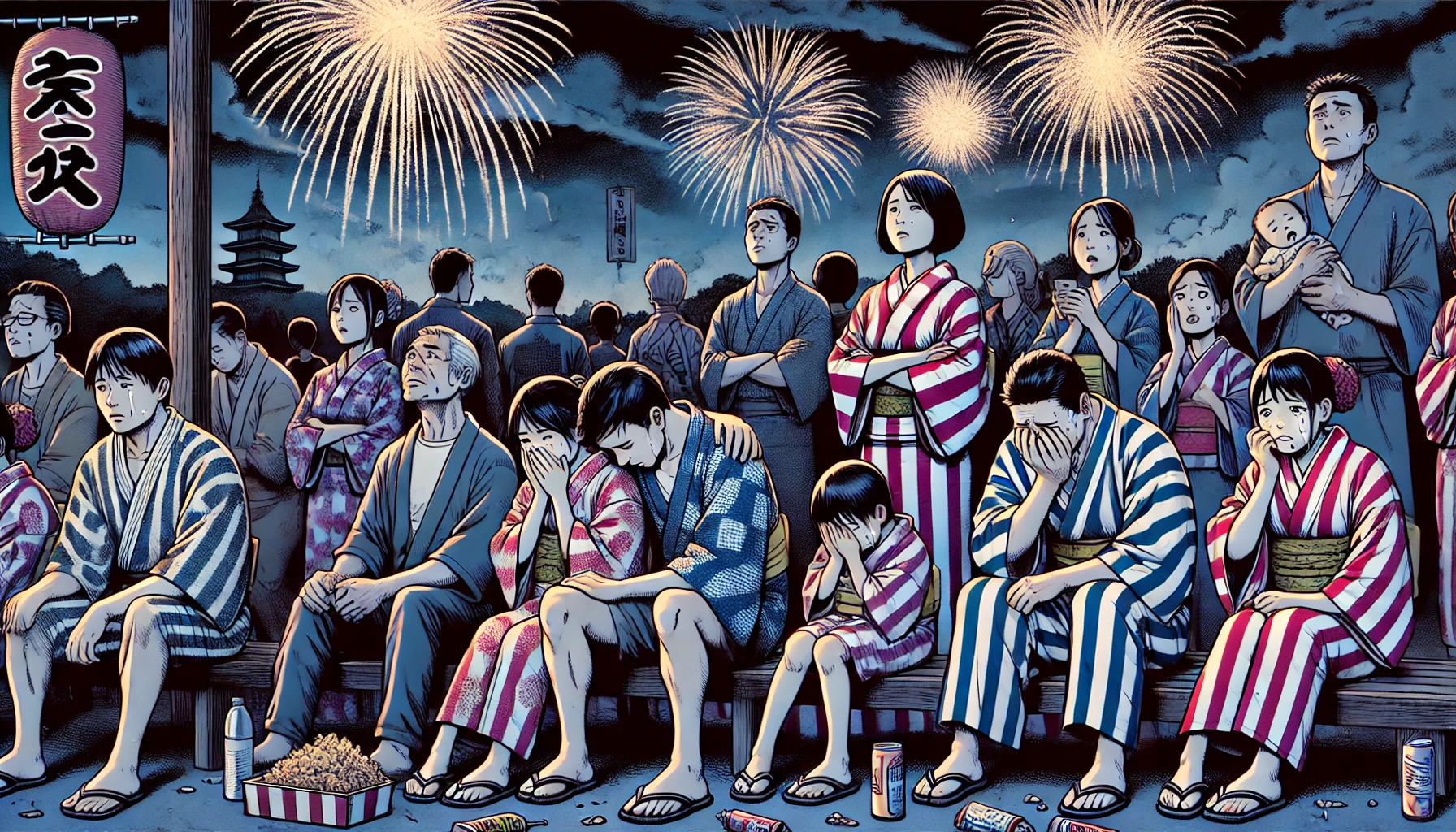
Every summer in Japan, the night skies come alive with dazzling fireworks displays, drawing crowds in yukata and sandals to riversides and harbors. But in 2025, a growing number of towns and cities are choosing silence over sparkle. Why? The answer lies in a combination of rising costs, inflation, and local budget constraints — and it may reshape the future of Japanese summer traditions.
🎆 Fireworks on Pause: A Growing Trend
In recent years, municipalities across Japan have been forced to cancel or downsize their traditional summer fireworks festivals (hanabi taikai). According to regional reports in July 2025, over 140 local events — many of them beloved fixtures for decades — have already been called off this year due to financial strain.
While cancellations aren’t entirely new, the pace of these decisions has accelerated dramatically. For instance, several well-known displays in prefectures like Shizuoka, Niigata, and Hiroshima were halted this summer, citing budget shortfalls and rising operational costs.
💸 The Price of Pyrotechnics in the Age of Inflation
Why are fireworks becoming unaffordable?
The short answer: inflation and labor shortages. The longer explanation reveals a more systemic problem:
- Raw material costs have increased significantly, including chemicals used in fireworks, safety equipment, and transportation.
- Security, cleanup, and staff wages have soared due to both inflation and a shrinking labor force.
- Insurance premiums for large gatherings have gone up in the wake of more frequent extreme weather and tighter regulations.
- Crowd control and police presence — especially post-pandemic — now require higher funding and staffing.
Whereas a mid-sized fireworks event might have cost around ¥20 million ($125,000) a decade ago, current estimates suggest that same event could now demand over ¥35 million ($220,000).
🏙️ The Rich Get Fireworks, the Rest Get Silence?
What this means is a growing gap between large, affluent cities — like Tokyo’s Sumidagawa Fireworks Festival or Kobe’s Minato Hanabi — and smaller, rural municipalities. Wealthier cities often have:
- Greater access to sponsorships and tourism revenue
- Larger budgets to absorb inflation
- Stronger connections with fireworks companies
Meanwhile, smaller towns, which once relied on volunteers and small donations, are finding it increasingly impossible to continue. Some have switched to alternative events like laser shows, lantern festivals, or community bon dances to keep the spirit alive without the financial burden.
🔮 Will Fireworks Disappear from Japan’s Future?
Not completely — but the landscape is changing.
Expect a future where:
- Only well-funded urban centers can host large-scale fireworks.
- Regional collaborations may emerge, where multiple towns share the cost of a single centralized event.
- Digital and silent alternatives like drone shows become more common, especially in noise-sensitive areas.
- Ticketed entry to fireworks festivals may become the norm, replacing the traditional free-access model.
Unless national or prefectural-level subsidies are introduced, it’s likely that the era of free, community-run hanabi shows is nearing its end.
🎯 My Take: More Than Just a Budget Cut
Fireworks in Japan aren’t just about entertainment — they’re emotional. For many, they mark the height of summer, youth memories, and community bonding. Their fading presence isn’t just a cost issue; it reflects a larger struggle faced by rural Japan: depopulation, aging societies, and eroding local culture.
If Japan wants to preserve these traditions, it may be time to reconsider how culture is funded — and who gets to enjoy it.



















































